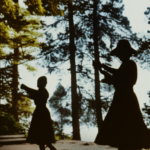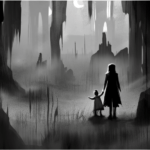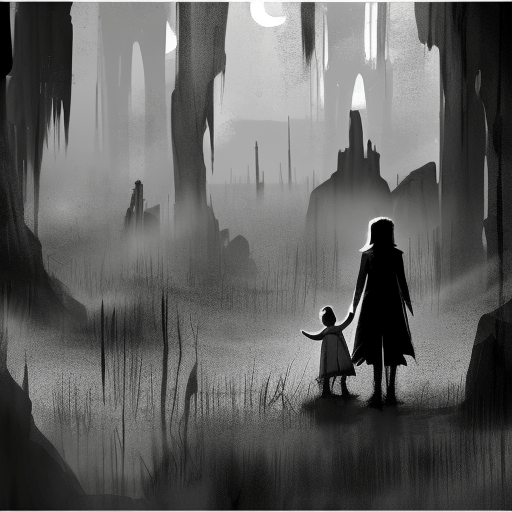Summary:
Young Goodman Brown is a short story by Nathaniel Hawthorne that explores the themes of morality, sin, and the human psyche. The story follows the journey of a young Puritan man named Goodman Brown as he ventures into the forest one night, encountering various characters and witnessing disturbing events that challenge his beliefs and shake his faith.
The Journey into Darkness
Goodman Brown leaves his wife, Faith, behind and embarks on a mysterious journey into the forest, which symbolizes the darkness and temptation that lurks within the human soul. As he walks deeper into the woods, he encounters an old man who resembles his father and a woman named Goody Cloyse, both of whom are revealed to be witches. These encounters shake Goodman Brown’s perception of the people he once admired and trusted, highlighting the theme of the inherent evil that exists in humanity.
The Satanic Ritual
As Goodman Brown continues his journey, he stumbles upon a gathering of townspeople, including respected members of the community, participating in a satanic ritual. Shocked and disillusioned, he realizes that even those who appear virtuous are capable of succumbing to temptation and committing sinful acts. The revelation of the townspeople’s involvement in the ritual further challenges Goodman Brown’s faith in the goodness of humanity and raises questions about the nature of morality.
The Loss of Innocence
Throughout his journey, Goodman Brown grapples with the loss of his innocence and the corruption of his own soul. He is tempted by the devil himself, who offers him a staff that grants him power and knowledge. Although Goodman Brown initially resists, he eventually succumbs to the temptation and accepts the staff, symbolizing his surrender to evil. This moment marks the ultimate loss of his innocence and his descent into darkness.
The story concludes with Goodman Brown waking up in the forest, uncertain whether his experiences were real or merely a dream. However, the impact of his journey remains, as he becomes a cynical and mistrustful man, forever haunted by the knowledge of the evil that lies within himself and others.
- Key Takeaways:
- Appearances can be deceiving, and even those who seem virtuous may have hidden darkness within them.
- The loss of innocence and the corruption of the soul are themes that pervade the story.
- Goodman Brown’s journey into the forest serves as a metaphor for the exploration of the human psyche and the battle between good and evil.
“Evil is the nature of mankind.”
– Nathaniel Hawthorne
In Young Goodman Brown, Hawthorne delves into the depths of human nature, exploring the themes of morality, sin, and the loss of innocence. The story serves as a cautionary tale, reminding readers that evil exists within all of us and that appearances can be deceiving. Through Goodman Brown’s journey into the forest, Hawthorne challenges conventional notions of goodness and exposes the dark underbelly of humanity. Ultimately, the story leaves readers questioning the true nature of morality and the fragility of faith.












